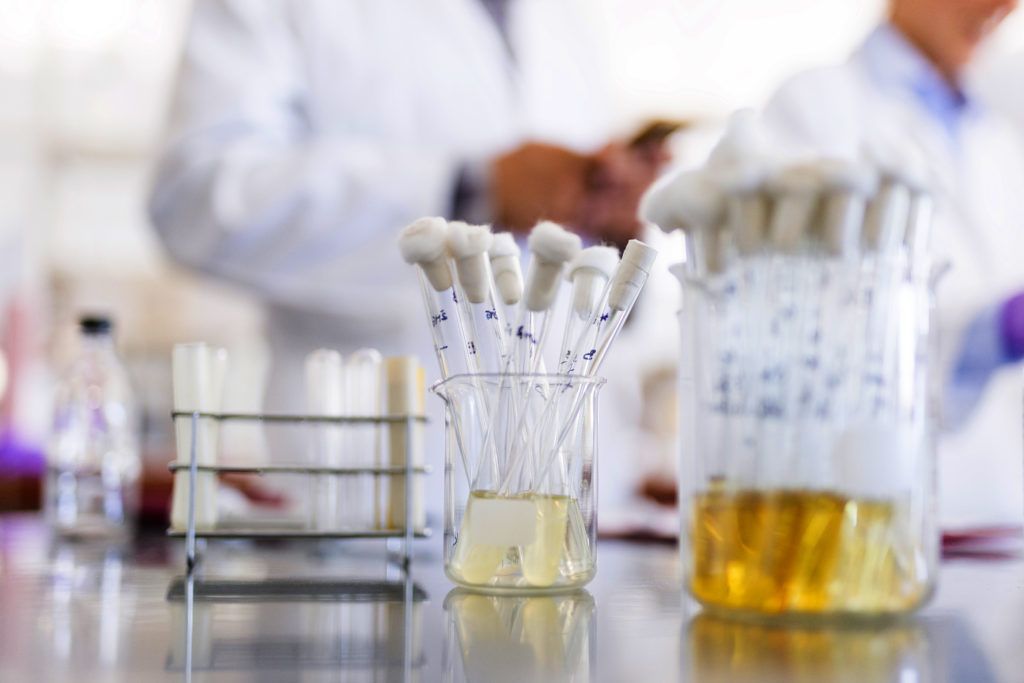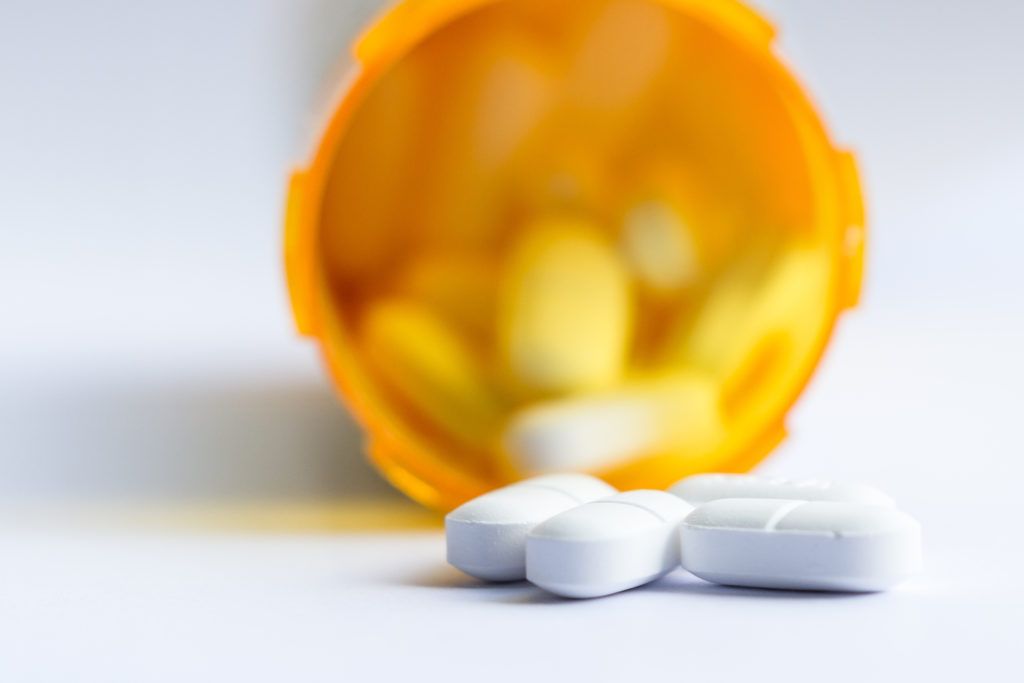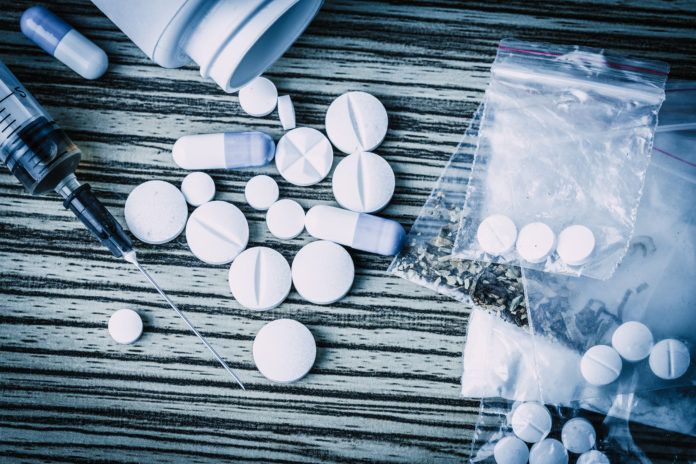Louisiana’s industrial complex has a shrewd opponent in the fight against workplace substance abuse—the internet.
Even as drug testing technology becomes increasingly sophisticated, some workers are finding ways to elude employer-mandated drug testing through a quick and easy internet search.
“Typically, you get between 5 million to 8 million hits when you search on Google,” says Garet Rembert, president of TromLab, a Florida-based developer of drug detection technology. “Social media educates the drug user instantly on how to pass the drug test, and there are a ton of different subversion methods.”
Synthetic urine is the most significant threat. Rembert estimates that $1 billion of the product is sold online in the U.S., primarily by companies based in China. Chemists there balance the pH perfectly and actually provide preparation instructions for passing a test.
“They show you steps, from A to Z,” Rembert adds. “And if you fail your test, you can get 100% of your money back, guaranteed. That’s how confident they are.”
Despite the availability of synthetic products, some owners and contractors feel the number of forgeries is relatively low.
Mark Sammis, director of human resources at Excel Modular Scaffold, with four offices in Louisiana, says his company stays ahead of the problem by using companies such as DISA Global Solutions, a third party testing administrator that relies upon a network of vendor lab partners.
DISA’s lab partners use a portfolio of testing methods, including urine, hair and saliva, to stay ahead of the cheaters. “We feel as a company that we’re doing all the right things,” Sammis says. “Most facilities also do hair or saliva testing now. You can’t fake the hair and you can’t fake a saliva test.”
Still, urine testing remains the standard for many in the petrochemical, oil and gas markets. Rebecca Jones, Pala Group’s human resources department manager, says those that try to circumvent the process are typically caught in the act.
“We have employees that go out to the clinic and try to give a cold specimen, or they try to get away with something,” Jones says. “But to say that I know people who are getting away with it, I can’t say that.”
Rembert says the problem is bigger than some think because there’s no way to really know how deeply the market has been impacted.
“If you can’t detect something, how can you know?” he asks. There are seven states in the U.S. that have officially banned the purchase of counterfeit urine, but Rembert says that’s irrelevant. “Online, you can buy it all day long and ship it to your house next day.” He says TromLab’s technology, which is sold directly to testing labs, can accurately detect sample validity.
Sarah Taylor, clinic administrator at Gulf Coast Occupational Medicine in Baton Rouge, says local testing agencies are doing a decent job of keeping up with the times, but agrees that there are forces working against them.
“Take a trip to a ‘head shop’ or a drug paraphernalia store and you’d be amazed at everything on the market, from shampoos to drinks to everything else to help you with your drug test,” Taylor says.
“Can I say that 100% of our clients are tested without any of that sort of thing happening? No, I can’t say that. I can say that we are constantly employing new efforts, measures and testing techniques to eliminate that. We are very conscious of it.”

CHANGES IN HABIT
Alarmingly, there has been a spike in the number of positive tests in prescription drugs and synthetic marijuana in recent months. In 2017, Taylor says, opioids threatened to surpass amphetamines and marijuana in the number of positive drug tests performed by Gulf Coast Occupational Medicine.
Overall, Taylor’s group had 11% positive drug tests last year, most discovered during pre-employment testing.
State data seems to back up her claim. According to the Louisiana Vital Records Office, annual deaths in Louisiana from opioids have more than tripled in a five-year period, increasing from 100 in 2011 to 320 in 2016.
From the front lines, Pala Group’s Jones says the view is the same. “We’ve found that opioids and synthetic marijuana appear to be most prevalent at this time,” she adds. “We’re having issues with people abusing those types of drugs.” Consequently, as Pala’s third-party administrator, DISA began testing for both in July 2017.
Even though opioids are often legally prescribed, Pala and others consider them “safety sensitive.” Scott Couper, a senior manager at Pala, says there have been times when “good, long-term employees who are on a prescription drug have been relieved of their duties until they are well enough to get off that prescription.”
To track opioid trends in the state, Dr. Esteban Gershanik, director of the Bureau of Health Informatics at the Louisiana Department of Health, is currently using $23 million in grants from the Centers for Disease Control and Prevention to gather and validate available data on the subject.
Gershanik’s office monitors hospitalizations and works with the Louisiana Vital Records Office, coroners’ offices, hospital associations and the Louisiana Board of Pharmacy.
“We’re digging into the numbers to understand what age, gender, race and locations are most affected, then pulling those pieces together,” he says.
Gershanik’s bureau plans to unveil an online dashboard in early 2018 that will provide a central location for the data.
As one outcome of his work, the first Advisory Council on Heroin and Opioid Prevention and Education—comprised of various state groups and entities—convened in late 2017 to begin using the data to develop a remedy for the crisis.

AN INCREASING SOPHISTICATION
Taylor says the future looks bright, since increasingly sophisticated drug tests are making it less likely that employees will be able to fake a drug test. Industrial owners and contractors are also becoming savvier as they recognize the benefits of a drug-free work culture.
“They are placing a higher priority on substance abuse testing and making sure their company policies protect them and their workforce,” she adds. “Strong drug testing helps you with your workers’ compensation insurance. It eliminates injuries. It also gets you a better, cleaner workforce that is more productive and efficient.”
Sammis says DISA Global shares drug testing information with other member contractors and owners, thereby preventing substance abusers from transferring undetected to another employer or jobsite. “They fill out the application and then we start researching them,” he says. “We don’t hire anyone that has tested positive within two years.”
Furthermore, Excel randomly tests 55% of its employees, which is above industry standard, and also tests employees when there is reasonable suspicion or following an accident.
Pala also keeps the bar high for its drug testing program. “Some testing is driven by our clients’ requirements, but we follow the same standards for all of our workforce,” says Couper. “That includes testing our executives.”
Pala’s drug testing policy extends to its truck drivers as well, who are only required by law to pass a DOT drug test.
“Because they’re going into our client facilities, we’re meeting both the DOT requirements (which excludes synthetic marijuana) and our clients’, too,” Couper notes. “We make sure they’re drug-free in their facilities.”
Sammis feels drug testing and education are much improved over a decade ago. “I think it’s a lot better now that you have these consortiums that the majority of clients are using. The Marathons, Shells and ExxonMobils are typically using DISA or another major company.”
Nonetheless, there could be forces working against the sharing of such information.
In a move that could do more harm than good, a new OSHA regulation in January 2017 prohibits or severely restricts retaliatory conduct and electronic reporting of occupational injuries and illnesses, expanding that to include alcohol and drug testing.
THE REAL DANGER
Industry leaders say the dangers of workplace substance abuse are self-evident.
“Every day, the decisions [industry workers] make could cause harm to the people around them,” Pala’s Jones says. “They need to be completely alert and aware and in the moment. They can’t be taking medicines that are influencing their reactions.”
Pala’s “Stop Work Program” encourages employees to stop work if they notice a potential danger, see a better way to do a task, or notice a co-worker who might be under the influence.
“I practically adopt all the people that work for Pala; they become my kids,” Jones says. “I want them to go out there and be safe and not have to worry that something is going to happen to them when they get into the field.”
TAKING THE TEST
The three most common forms of drug testing used by Louisiana industry
URINE
• Easy to collect, but also easily substituted with nonsubject urine
• Affordable ($22 to $30 per test)
• Window of detection is two weeks to three months
• Multiple panels allow a company to test for a wide range of substances
ORAL
• Easy to collect and cannot be substituted
• Reasonably priced
• Window of detection is small: one to seven days
HAIR
• More difficult to collect, but cannot be substituted
• Expensive ($100 to $175 per test)
• Limited panels of substances for which it tests
• Window of detection is two weeks to six months
• Used primarily to detect chronic users
SOURCE: Gulf Coast Occupational Medicine, Baton Rouge
This article was originally published in the first quarter 2018 edition of 10/12 Industry Report.








